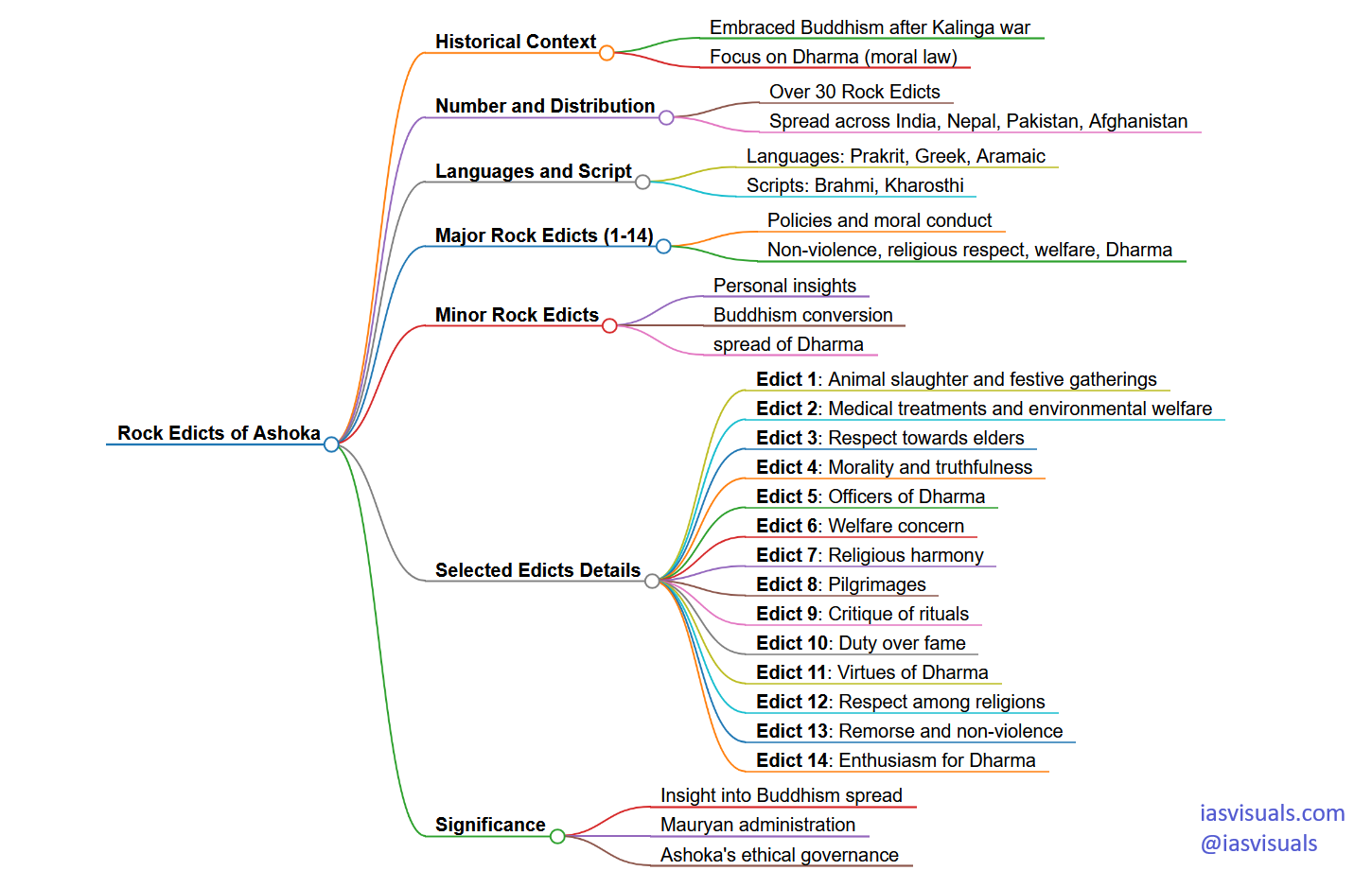The Rock Edicts of Ashoka are a series of proclamations inscribed on rocks and pillars by Ashoka the Great, the Emperor of the Mauryan Empire who ruled from 268 to 232 BCE. These edicts are among the earliest written records of Indian history and offer insight into Ashoka’s reign and the spread of Buddhism. Here are the details of the Rock Edicts in point-wise format:
1. Historical Context:
Ashoka embraced Buddhism after witnessing the massive bloodshed in the Kalinga war. His conversion led to a profound change in his governance, focusing on Dharma (moral law).
2. Number and Distribution:
There are more than 30 Rock Edicts spread across India, Nepal, Pakistan, and Afghanistan. These include major and minor rock edicts.
3. Languages and Script:
The edicts were inscribed in various languages, including Prakrit, Greek, and Aramaic, using the Brahmi and Kharosthi scripts, reflecting the diversity of Ashoka’s empire.
4. Major Rock Edicts (1-14):
These edicts outline Ashoka’s policies and preach moral and ethical conduct. They emphasize non-violence (Ahimsa), respect for all religions, welfare measures, and the importance of Dharma.
5. Minor Rock Edicts:
These edicts are more personal in nature, where Ashoka talks about his conversion to Buddhism, his efforts to spread Buddhist principles, and his desire for his subjects to live in accordance with Dharma.
6. Edict 1:
Prohibits animal slaughter and festive gatherings, promoting moral values instead.
7. Edict 2:
Focuses on medical treatments for humans and animals and the importance of planting trees and digging wells.
8. Edict 3:
Encourages respect towards parents, teachers, and elders.
9. Edict 4:
Advocates the importance of morality, truthfulness, and purity of heart.
10. Edict 5:
Establishes officers of Dharma to enforce the teachings of Ashoka.
11. Edict 6:
Expresses Ashoka’s desire to be informed about the state of his people, showing his concern for their welfare.
12. Edict 7:
Promotes harmony among different religious sects, emphasizing their common goals.
13. Edict 8:
Describes Ashoka’s pilgrimages to Buddhist holy sites, promoting the concept of pilgrimage.
14. Edict 9:
Criticizes ceremonies and rituals, promoting the practice of Dharma for inner peace and harmony.
15. Edict 10:
Rejects fame and glory in favor of duty and morality.
16. Edict 11:
Explains Dharma as a set of virtues, including kindness, truthfulness, and purity.
17. Edict 12:
Calls for respect among all religions and sects, recognizing their core similarities.
18. Edict 13:
Records Ashoka’s remorse over the Kalinga war and his subsequent embrace of non-violence and Buddhism. It also mentions his efforts to spread Buddhism beyond India.
19. Edict 14:
Expresses Ashoka’s enthusiasm for spreading the Dharma and his efforts in inscribing the edicts.
20. Significance:
The Rock Edicts are crucial for understanding the early spread of Buddhism, the administration of the Mauryan Empire, and the philosophical and ethical basis of Ashoka’s rule.
These edicts provide a unique glimpse into the governance and moral philosophy of one of India’s greatest emperors, emphasizing welfare, non-violence, and religious tolerance.

